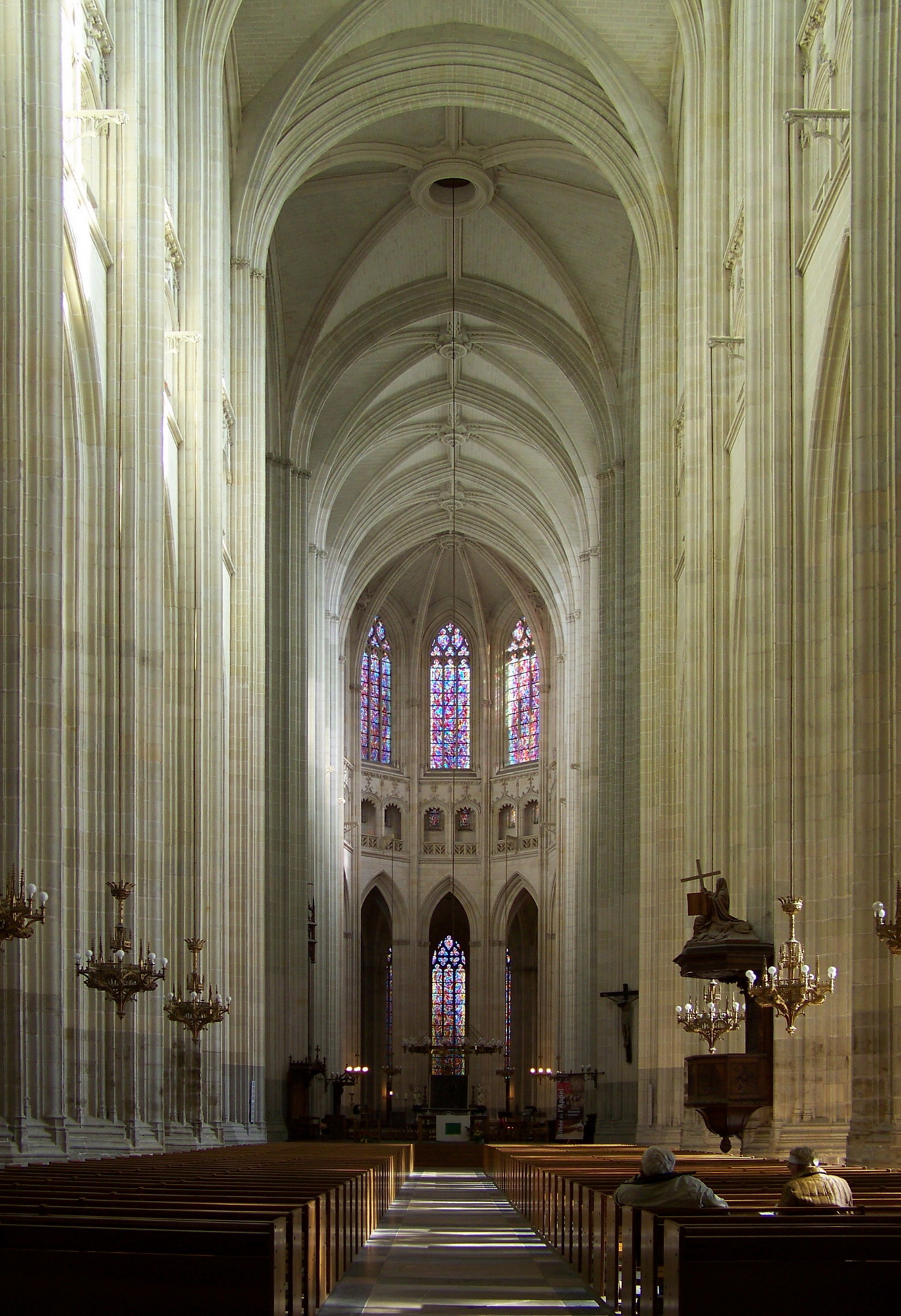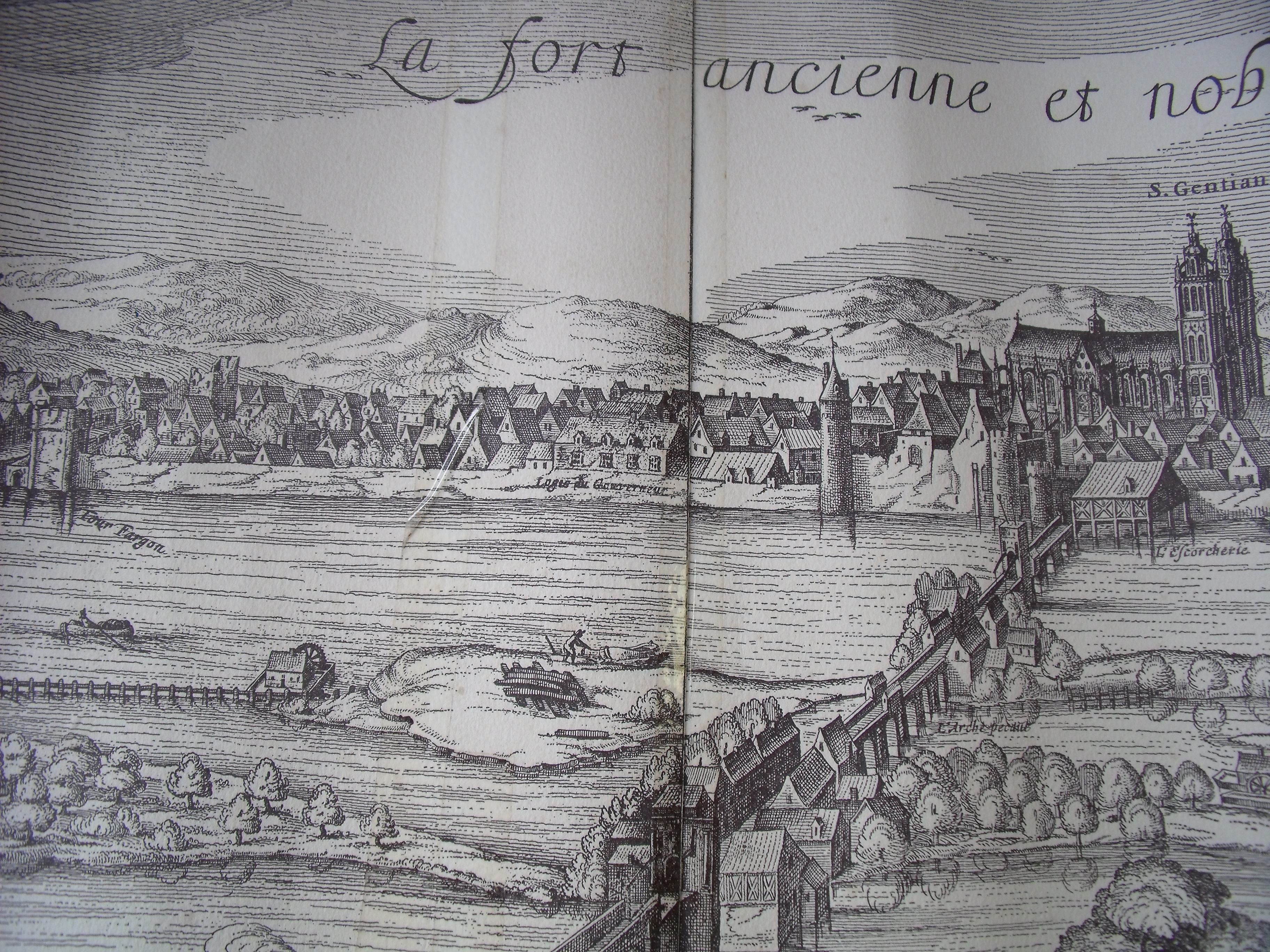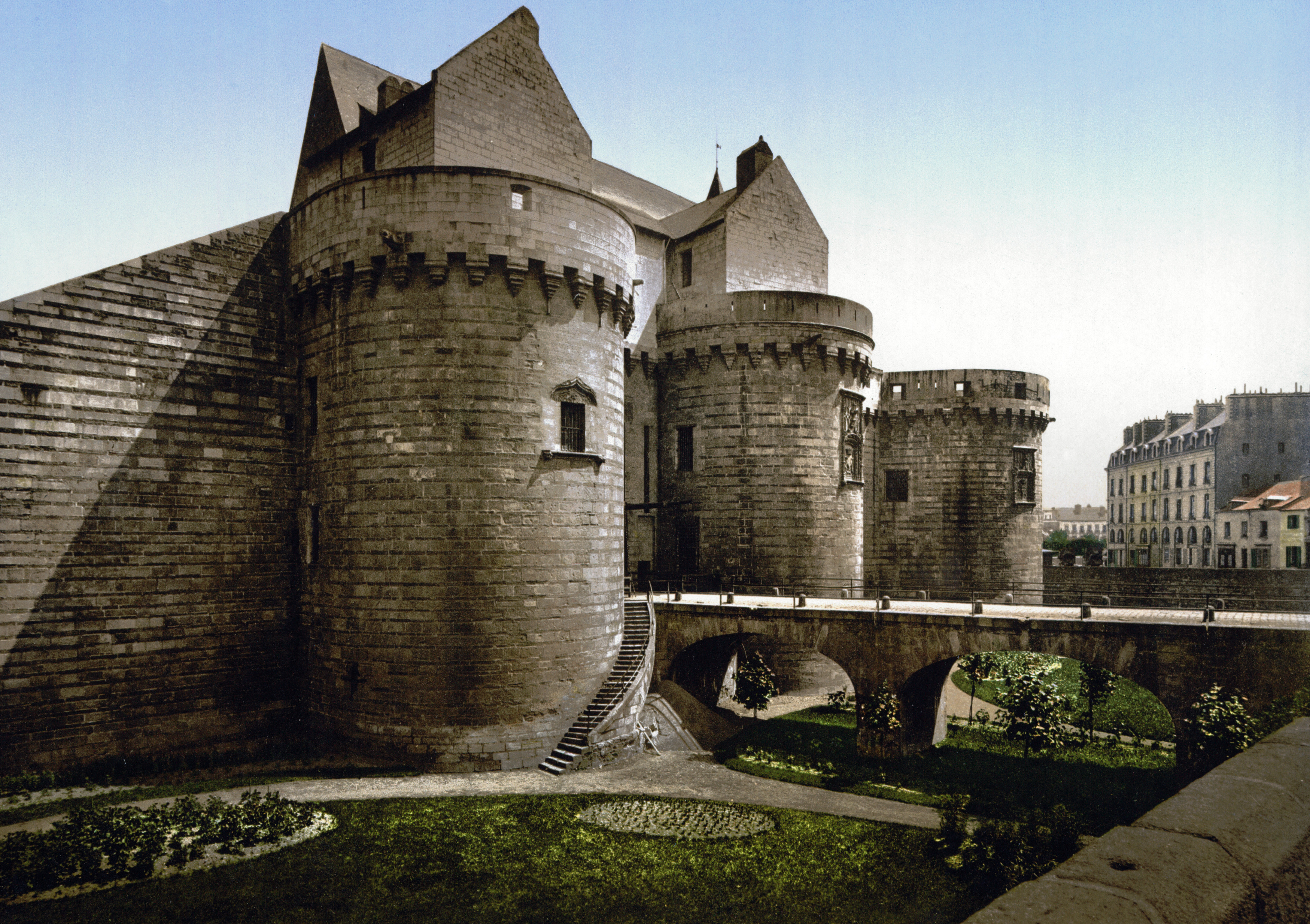|
Mathurin Rodier
Mathurin Rodier or Mathelin Rodier was a French architect born around 1410 and died around 1484. He was the architect of the Saint-Pierre-et-Saint-Paul of Nantes Cathedral for at least 36 years, starting no later than 1444 and ending no earlier than 1480. Biography The information regarding Mathurin Rodier (also known as Mathelin Rodier) is fragmentary. We know he was coming to Nantes from Tours, where he had a brother, Jean Rodier, and that in 1484, he was married to Édeline Ponset Il travaille sur le chantier de la cathédrale Saint-Gatien de Tours under the direction of Jean de Dammartin between 1431 and 1434, to a position equivalent to that of Jean Benoist and Huguet of Dammartin, son of Jean. Before 1444 he went to Nantes, where he took charge of several building sites, on the Saint-Nicolas gate, the , the cathedral, the Château des ducs de Bretagne, the . The presence of Mathurin Rodier at the head of the Nantes cathedral site is attested in 1444, with the charge of ma ... [...More Info...] [...Related Items...] OR: [Wikipedia] [Google] [Baidu] |
Nantes Cathedral
Nantes Cathedral, or the Cathedral of St. Peter and St. Paul of Nantes (french: Cathédrale Saint-Pierre-et-Saint-Paul de Nantes), is a Roman Catholic Gothic cathedral located in Nantes, Pays de la Loire, France. Construction began in 1434, on the site of a Romanesque cathedral, and took 457 years to finish in 1891. It has been listed since 1862 as a ''monument historique'' by the French Ministry of Culture. Cathédrale Saint-Pierre Saint-Paul Background The reconstruction of the cathedral commenced during the early to mid-15th century during a time when Nantes and Brittany were commercially prosperous, initiating such large-scale architectural projects on a wide scale, partly owing to the opportunist and skilful diplomatic policy of John V, Duke of Brittany in a period of political turmoil and conflict with England. History The cathedral's foundation stone was laid on 14 April 1434, by John V, Duke of Brittany and Jean de Malestroit, Bishop of Nantes (1417–1443). The first a ... [...More Info...] [...Related Items...] OR: [Wikipedia] [Google] [Baidu] |
Tours
Tours ( , ) is one of the largest cities in the region of Centre-Val de Loire, France. It is the Prefectures in France, prefecture of the Departments of France, department of Indre-et-Loire. The Communes of France, commune of Tours had 136,463 inhabitants as of 2018 while the population of the whole functional area (France), metropolitan area was 516,973. Tours sits on the lower reaches of the Loire, between Orléans and the Atlantic Ocean, Atlantic coast. Formerly named Caesarodunum by its founder, Roman Augustus, Emperor Augustus, it possesses one of the largest amphitheaters of the Roman Empire, the Tours Amphitheatre. Known for the Battle of Tours in 732 AD, it is a National Sanctuary with connections to the Merovingian dynasty, Merovingians and the Carolingian dynasty, Carolingians, with the Capetian dynasty, Capetians making the kingdom's currency the Livre tournois. Martin of Tours, Saint Martin, Gregory of Tours and Alcuin were all from Tours. Tours was once part of Tour ... [...More Info...] [...Related Items...] OR: [Wikipedia] [Google] [Baidu] |
Cathédrale Saint-Gatien De Tours
, native_name_lang = , image = Tours Cathedral Saint-Gatian.jpg , imagesize = , caption = Tours Cathedral , country = , osgridref = , osgraw = , location = Tours, Indre-et-Loire , previous denomination = , churchmanship = , membership = , attendance = , website = , former name = , bull date = , founded date = , founder = , dedication = Gatianus of Tours , dedicated date = , consecrated date = , cult = , relics = , events = , past bishop = , people = , status = Cathedral , functional status = Active , heritage designation = , designated date = , denomination = Roman Catholic Church , ar ... [...More Info...] [...Related Items...] OR: [Wikipedia] [Google] [Baidu] |
Jean De Dammartin
Jean de Dammartin or Jehan de Dammartin sometimes spelled Dampmartin (14th-century in Jargeau (former province of the Orléanais – 1454 in Tours) was a 15th-century French architect. He was the son of Drouet de Dammartin and probably Guy de Dammartin's nephew. Biography Jean de Dammartin was the architect of the transept of the Saint-Julien du Mans Cathedral, between 1420 and 1431.Thomas Rapin, ''La cathédrale de Tours. La façade. Les campagnes du XVe et le programme iconographique du portail central'', , in ''Congrès archéologique de France. 155e session. Monuments en Touraine. 1997'', , Paris, 2003. Forced to leave Le Mans after the English took the city during the hundred years war, he succeeded Olivier Freredoux as architect of the cathédrale Saint-Gatien de Tours from 1431 and worked there until 1453 on the facade, when he was replaced by Jean Papin. He is referred to in the texts as "maistre and governor of the church of Tours". Jean married Jeannette Moreau a ... [...More Info...] [...Related Items...] OR: [Wikipedia] [Google] [Baidu] |
Château Des Ducs De Bretagne
:''This article includes information translated from the Wikipedia article Château des ducs de Bretagne'' The Château des ducs de Bretagne ( en, Castle of the Dukes of Brittany) is a large castle located in the city of Nantes in the Loire-Atlantique ''département'' of France; it served as the centre of the historical province of Brittany until its separation in 1956. It is located on the right bank of the Loire, which formerly fed its ditches. It was the residence of the Dukes of Brittany between the 13th and 16th centuries, subsequently becoming the Breton residence of the French Monarchy. The castle has been listed as a ''monument historique'' by the French Ministry of Culture since 1840. Today the castle houses the Nantes History Museum. Restoration Starting in the 1990s, the town of Nantes undertook a massive programme of restoration and repairs to return the site to its former glory as an emblem of the history of Nantes and Brittany. Following 15 years of works and thr ... [...More Info...] [...Related Items...] OR: [Wikipedia] [Google] [Baidu] |
Tours Cathedral
, native_name_lang = , image = Tours Cathedral Saint-Gatian.jpg , imagesize = , caption = Tours Cathedral , country = , osgridref = , osgraw = , location = Tours, Indre-et-Loire , previous denomination = , churchmanship = , membership = , attendance = , website = , former name = , bull date = , founded date = , founder = , dedication = Gatianus of Tours , dedicated date = , consecrated date = , cult = , relics = , events = , past bishop = , people = , status = Cathedral , functional status = Active , heritage designation = , designated date = , denomination = Roman Catholic Church , ar ... [...More Info...] [...Related Items...] OR: [Wikipedia] [Google] [Baidu] |
Presses Universitaires De Rennes
The Presses Universitaires de Rennes or PUR (''Rennes University Press'') is the largest French university press. Founded in 1984, PUR publishes around 200 books every year. It is located in Rennes in Brittany on the Rennes 2 University's La Harpe Campus. It belongs to this university but also publishes for other universities gathered in the ''Réseau des Université de l'Ouest Atlantique'' (University of Western Brittany, University of Southern Brittany, University of Rennes 1, University of Nantes, University of Angers, University of Maine (France), the University of La Rochelle and the François Rabelais University in Tours). External links official website {{Authority control Mass media in Rennes Rennes Rennes Rennes (; br, Roazhon ; Gallo: ''Resnn''; ) is a city in the east of Brittany in northwestern France at the confluence of the Ille and the Vilaine. Rennes is the prefecture of the region of Brittany, as well as the Ille-et-Vilaine department ... Publish ... [...More Info...] [...Related Items...] OR: [Wikipedia] [Google] [Baidu] |
Gothic Architecture
Gothic architecture (or pointed architecture) is an architectural style that was prevalent in Europe from the late 12th to the 16th century, during the High and Late Middle Ages, surviving into the 17th and 18th centuries in some areas. It evolved from Romanesque architecture and was succeeded by Renaissance architecture. It originated in the Île-de-France and Picardy regions of northern France. The style at the time was sometimes known as ''opus Francigenum'' (lit. French work); the term ''Gothic'' was first applied contemptuously during the later Renaissance, by those ambitious to revive the architecture of classical antiquity. The defining design element of Gothic architecture is the pointed or ogival arch. The use of the pointed arch in turn led to the development of the pointed rib vault and flying buttresses, combined with elaborate tracery and stained glass windows. At the Abbey of Saint-Denis, near Paris, the choir was reconstructed between 1140 and 1144, draw ... [...More Info...] [...Related Items...] OR: [Wikipedia] [Google] [Baidu] |
15th-century French Architects
The 15th century was the century which spans the Julian dates from 1 January 1401 ( MCDI) to 31 December 1500 ( MD). In Europe, the 15th century includes parts of the Late Middle Ages, the Early Renaissance, and the early modern period. Many technological, social and cultural developments of the 15th century can in retrospect be seen as heralding the "European miracle" of the following centuries. The architectural perspective, and the modern fields which are known today as banking and accounting were founded in Italy. The Hundred Years' War ended with a decisive French victory over the English in the Battle of Castillon. Financial troubles in England following the conflict resulted in the Wars of the Roses, a series of dynastic wars for the throne of England. The conflicts ended with the defeat of Richard III by Henry VII at the Battle of Bosworth Field, establishing the Tudor dynasty in the later part of the century. Constantinople, known as the capital of the world and ... [...More Info...] [...Related Items...] OR: [Wikipedia] [Google] [Baidu] |
Architects Of Cathedrals
An architect is a person who plans, designs and oversees the construction of buildings. To practice architecture means to provide services in connection with the design of buildings and the space within the site surrounding the buildings that have human occupancy or use as their principal purpose. Etymologically, the term architect derives from the Latin ''architectus'', which derives from the Greek (''arkhi-'', chief + ''tekton'', builder), i.e., chief builder. The professional requirements for architects vary from place to place. An architect's decisions affect public safety, and thus the architect must undergo specialized training consisting of advanced education and a ''practicum'' (or internship) for practical experience to earn a license to practice architecture. Practical, technical, and academic requirements for becoming an architect vary by jurisdiction, though the formal study of architecture in academic institutions has played a pivotal role in the development of the ... [...More Info...] [...Related Items...] OR: [Wikipedia] [Google] [Baidu] |
1410s Births , a year of the pre-Julian Roman calendar
{{numberdis ...
141 may refer to: * 141 (number), an integer * AD 141, a year of the Julian calendar * 141 BC __NOTOC__ Year 141 BC was a year of the pre-Julian Roman calendar. At the time it was known as the Year of the Consulship of Caepio and Pompeius (or, less frequently, year 613 '' Ab urbe condita''). The denomination 141 BC for this year has been ... [...More Info...] [...Related Items...] OR: [Wikipedia] [Google] [Baidu] |






.jpg)

